In Iningai country
Our first glamping night at Mitchell Grass Retreat was rather wild because of wind. It blew all night and everything that could flap did flap. We never felt insecure, because the tent’s floor and support structure are solid. It was just the noise. Also, in the morning, it was discombobulating doing your hair (or shaving your face) in front of a mirror that is waving around. But, we loved this place.
Fortunately, although the day started off breezy, the wind did die down significantly. However, it was fresh while we were having breakfast on the deck of “The Tin Shed”!
Today’s itinerary read like this:
“This morning we enjoy a tour at the School of Distance Education before visiting the iconic Stockman’s Hall of Fame, opened by Queen Elizabeth Il in 1988.
This afternoon we experience the Qantas Founders Museum which houses a Boeing 747 and the airline’s first 707. Enjoy a tour inside both aircraft and wander through this exceptional museum.
This evening we enjoy a cruise on the Thomson River, followed by dinner on the riverbank accompanied by a talented musical entertainer performing live on Smithy’s River Stage.”
It didn’t quite go this way, but it almost did, by which I mean we did not visit the School of Distance Education. Instead, our first stop was the …
Stockman’s Hall of Fame
We were dropped off and told we’d be picked up in 2.5 hours! How on earth could we spend this amount of time in a museum dedicated to stockmen, Len and I wondered? I can hear my mother saying “oh ye of little faith”, because of course our tour leaders knew what they were about. After 2.5 hours we’d given it our best shot, but hadn’t seen all we coulda!
Fully titled the Australian Stockman’s Hall of Fame & Outback Heritage Centre, it was founded by stockman and artist, Hugh Sawrey, with co-founders R.M. Williams AO, Dame Mary Durack, Ranald Chandler, Bruce Yeates, Nancy Button and Sir James Walker. It describes its core like this:
“The story of the “Great Brown Land, its people, its landscapes, its animals, and its environment. That is our story, a moment captured, a time remembered, a people and place that is like no other. Indigenous, pastoralists, explorers, men, women and children, animals, and environment co-existing, succeeding, failing, living, and dying, they all have a story to tell.”
This is a well-thought out museum experience – both in terms of content and how it is delivered to visitors. It has a proximity audio system with options for hearing more in each area. I love this approach. The galleries are themed: Songlines & Stock Routes; Gone Drovin’; Unsung Heroes; Pioneer’s Hut; Bush Craft; Sheep’s Back; Furthest Corner (RFDS); Living it up; Outback cinema; Pub with some beer; Poet’s corner.
As you can probably tell from this, they have taken a broad brush to the theme, incorporating the experience of First Nations People (separately and under relevant themes), women and men. The museum doesn’t focus on original artefacts – though there is a selection (the occasional journal, stockman’s equipment, etc). Instead, it mostly draws on images and oral histories. The design, such as the winding panels used for the major stock routes, is beautiful.
My only observation is that while it covered many bases there didn’t seem to be a lot about the landscape and environment, and the impact on it of stock and stock-droving. Nonetheless, it is a truly moving experience, so much so that even non-sentimental Len was almost moved to tears. And, we didn’t quite see it all. I’ve been interested in this part of Australia’s history for as long as I can remember, but I’ve not read about it in depth. Consequently, I learnt some things about the work and the life, not just facts but a greater appreciation of what it means to the people who live in these places doing this sort of work.
After we were picked up, and before lunch back at “The Tin Shed”, we were given some time to wander around town. Longreach’s streets, interestingly, are all named for birds.
Qantas Founders Museum
This multi-award winning museum is another example of a community getting together to honour the achievements of something special to their area, in this case, the “remarkable people who established the iconic Qantas airline”. These people, whom they dub the ‘Originals’, include Hudson Fysh, Paul McGinness, Fergus McMaster, and Arthur Baird. The idea for the museum originated in a meeting back in 1988, of Western Queensland communities established. It was finally opened in 1996. This museum is about Qantas but it has no formal link with Qantas, so don’t, they said, complain to them about Qantas!
Our visit started with free time in the more traditional museum part of the site, where we learnt about the founders and the airline’s origins, and saw things like engines and uniforms over the years. Then, it was over to our tour guide.
And again, he was another friendly, enthusiastic explainer, albeit not a volunteer and around his 50s I’d say, so more attuned to his audience. We started by walking past the Qantas Heritage-listed Hangar in Longreach, built in 1922. Qantas’ first planes were built in this hangar. Then we were in the now-covered air park where they have several actual planes. Our guide discussed many of them in chronological order providing, as he did so, a history of aviation from both a technical point of view and a socioeconomic one. Some of the planes we could walk through. The planes we saw were:
- DC-3: the first metallic plane, and first to make a profit as a passenger plane. It was designed in the 1930s, but became a significant plane during the war, being given different names by different countries (eg Dakota, in England). The model (VH-EAP) owned by the museum had done 49 years of flying service. It could carry up to 28 passengers
- Lockheed L-1049, Super Constellation, was the result of research into new aerodynamic shapes and the possibility of new metallics. It was inspired by the aquadynamics of dolphins. It has a pressurised cabin, and could take 32 passengers (I think)
- Boeing 707 series, took advantage of the invention of the jet engine in 1959. It replaced the Super Constellation, and halved travel time. The plane on their air park was the first commercially registered jet engine aeroplane in Australia, and it had some modifications requested by Qantas to enable it to do the long haul routes needed. Only 2 of this particular Qantas modified Boeing 707 exist today. No. 1 is in their air park, and no. 13 is (was) owned by John Travolta. It could carry well over 100 passengers.
- Boeing 747-200 could carry 360 economy plus 48 business passengers. It operated from 1979 to 2002. It was with this plane that Qantas introduced the idea of “business” travel.
You can read more about these planes on the Museum’s site.
Sunset cruise and dinner
This cruise was on the MV Longreach Explorer, and took us down the Longreach Billabong section of the Thomson River. The driver provided a calm, quiet commentary which was very different to those we’d experienced in the last few days. And it was just right for the end of a long day, as we sailed quietly down the river just before dusk.
We:
- saw egrets, longneck Australasian darters, pelicans, whistling kites; wallaroos (identified by their rounder ears) and Emmott’s short-necked turtle
- learnt that the Thomson River is the only river in the world that runs into a creek, Coopers Creek, and that it provides water for the town
- saw and learnt about coolabah trees, and how a 3m high tree will have 30m of roots, making them highly stable trees
- learnt that “muttaburra” is an Aboriginal word meaning “meeting place between three creeks”
- saw some scar trees, including one which has a canoe cut out on both sides, something that is very rare. There are 11 scar trees in one particular spot, which suggests the importance of this area to the Iningai people. There are no rocks in this area, so no rock art for the people to point to. These trees make a significant contribution to denoting their relationship with country.
- learnt about a weed that has many names, depending on the problems it causes: Drovers Curse or Mat Weed or Smart Weed
We disembarked at the end of the cruise at the starting place, which is a site the operators call Smithy’s Camp. Here we had an alternative service meal (lamb hot pot or barramundi) served outside, under fairy lights, with a country singer providing entertainment. I’m still COVID positive, but there were no tables for two, so we sat at large table for 6 with our tour leaders. They were happy with that because we were outside and they believe me to be at the end of the illness. The nice thing is that one of our co-passengers decided to join us, rather than sit at one of the other tour group tables. It was so nice to feel at least a little part of the group.
We were entertained by a country music singer who managed to hit the right spot most of the time! The evening ended with damper and cocky’s joy. They apparently had some gf damper, but I was too full and too tired to eat anything more!
At the end, when we were all on the bus, one of the business’s owners climbed on the bus and thanked us all for supporting the outback towns by coming on this tour! So often have we received this message. It feels genuine.
Some images from today
Our pics are an iffy lot, particularly today… partly because when you are on tour you have little control of your photography in terms of what you photograph, and getting the best lighting. But we hope they give you a flavour.

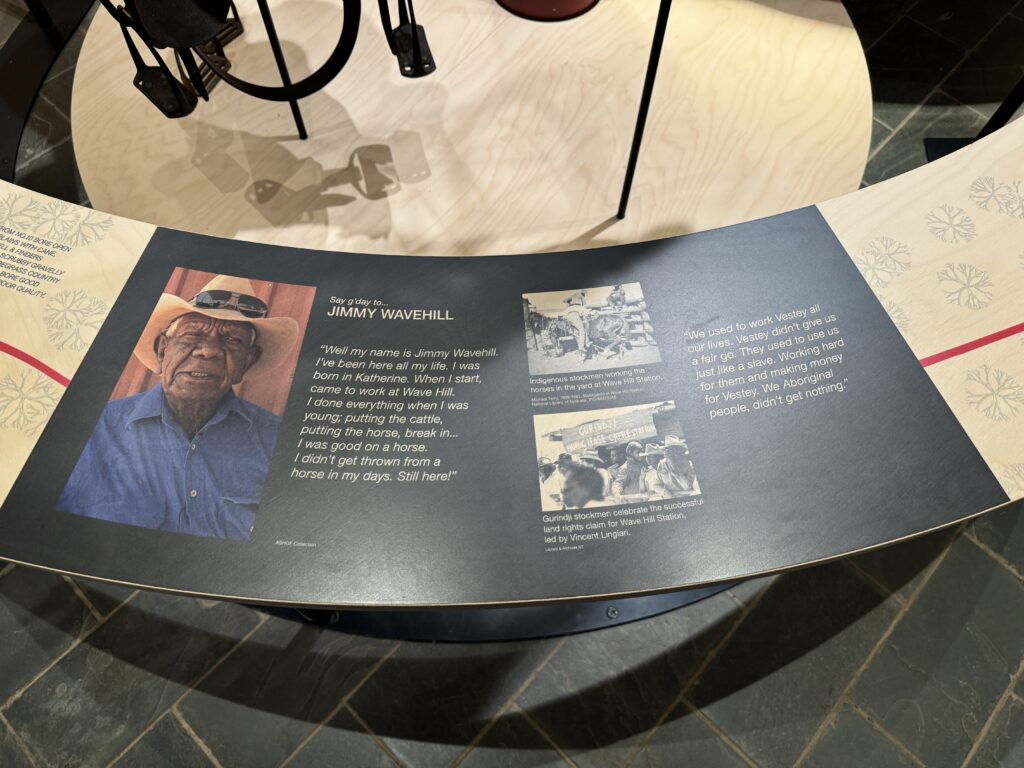
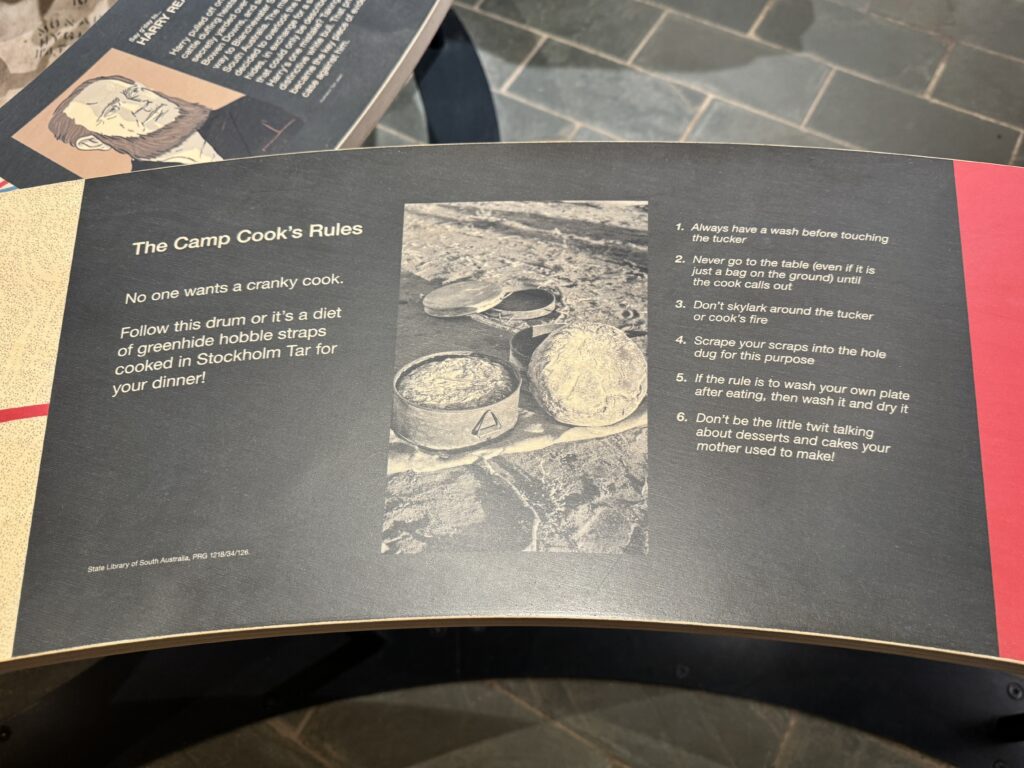
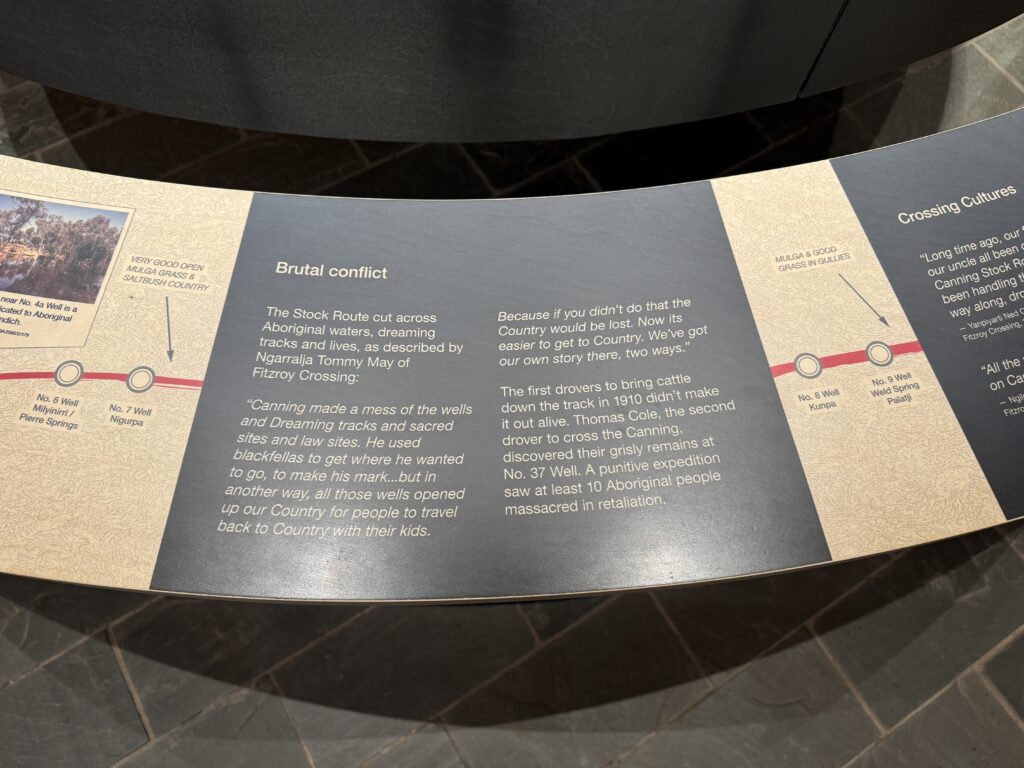

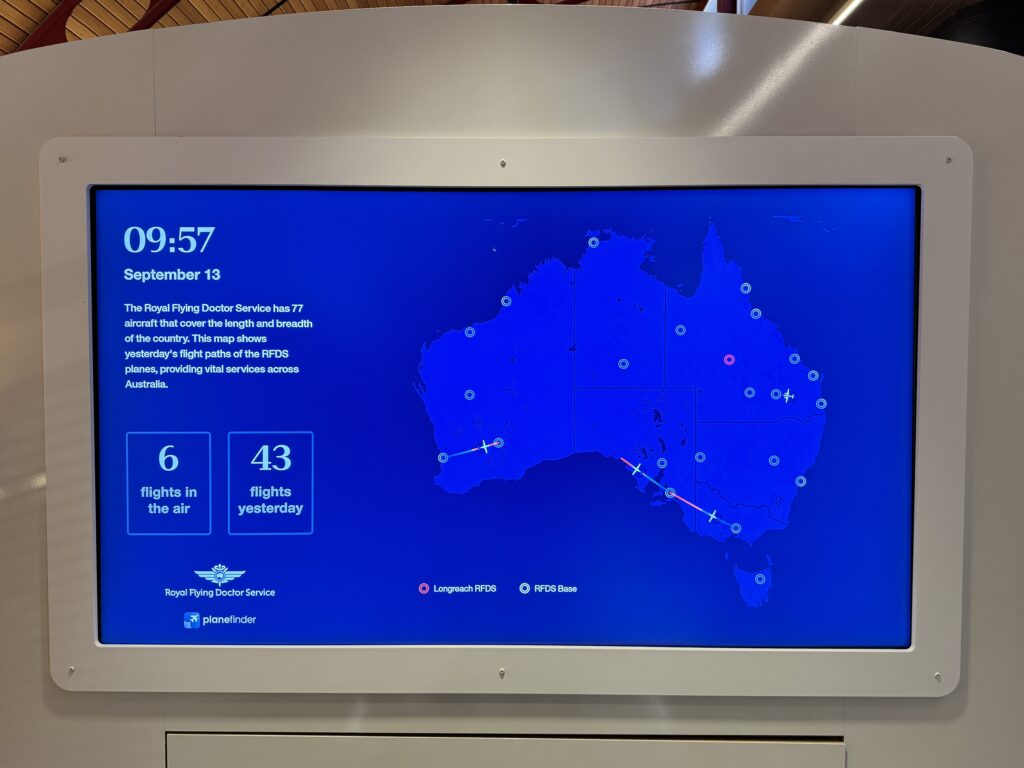
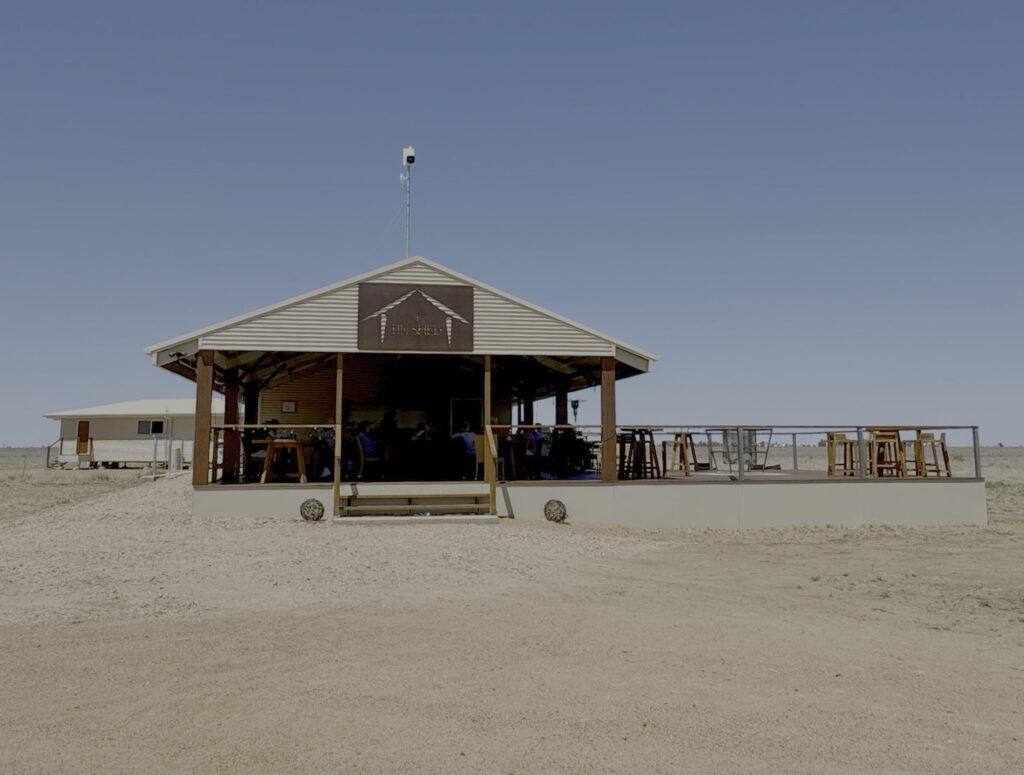

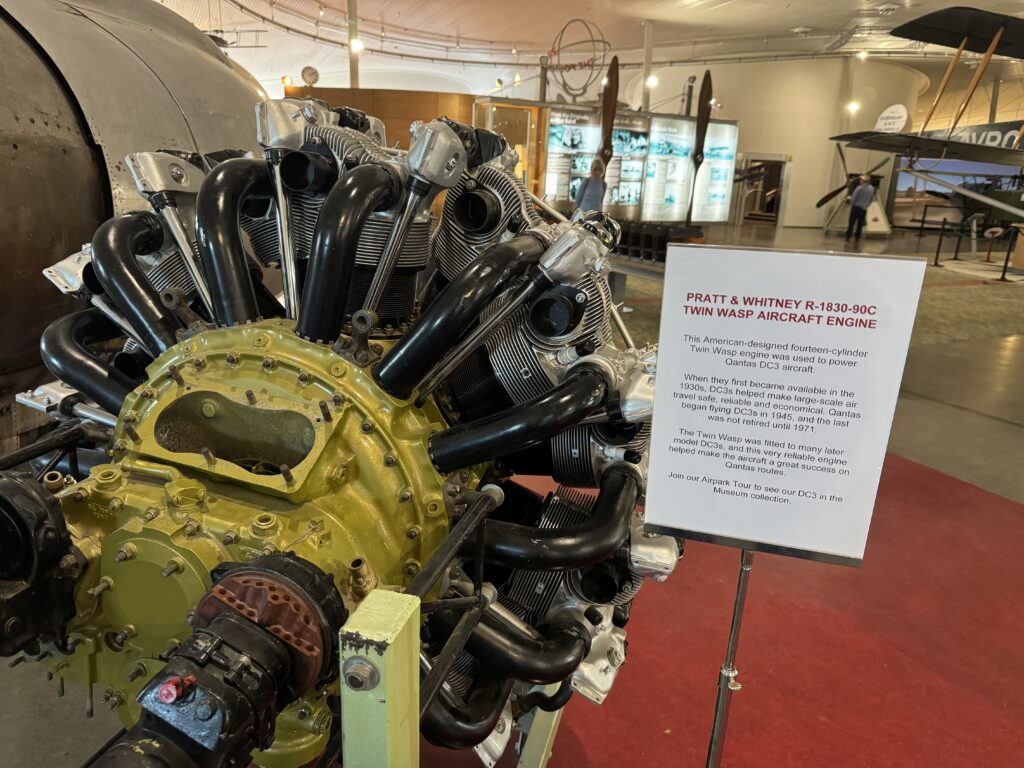

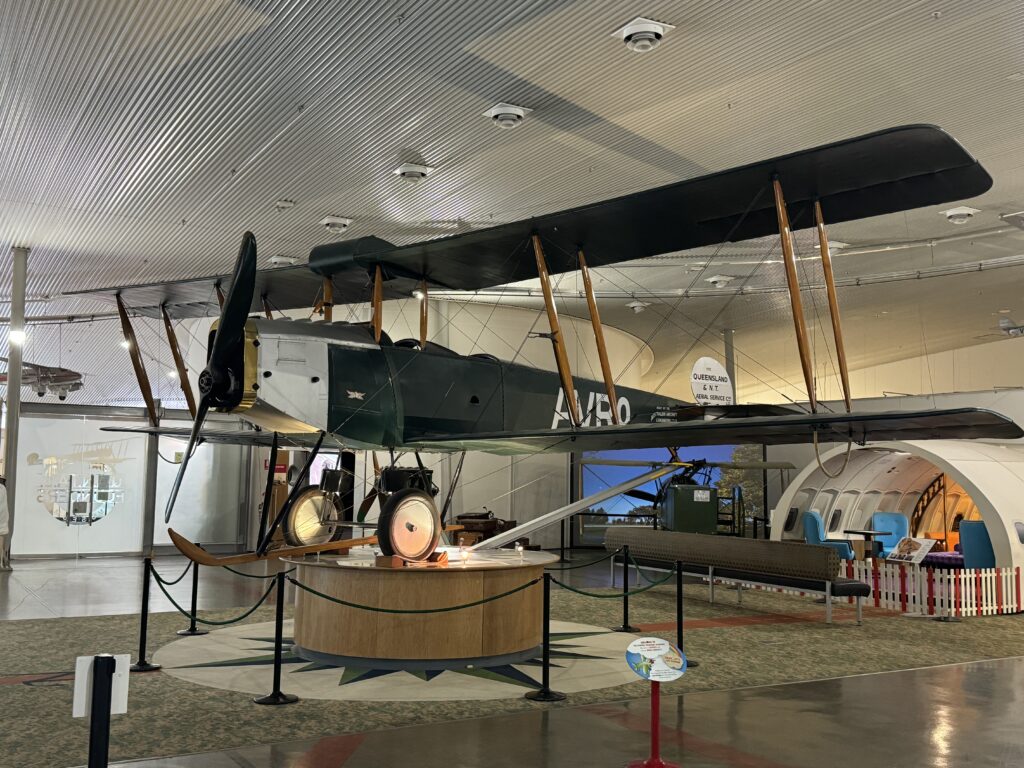
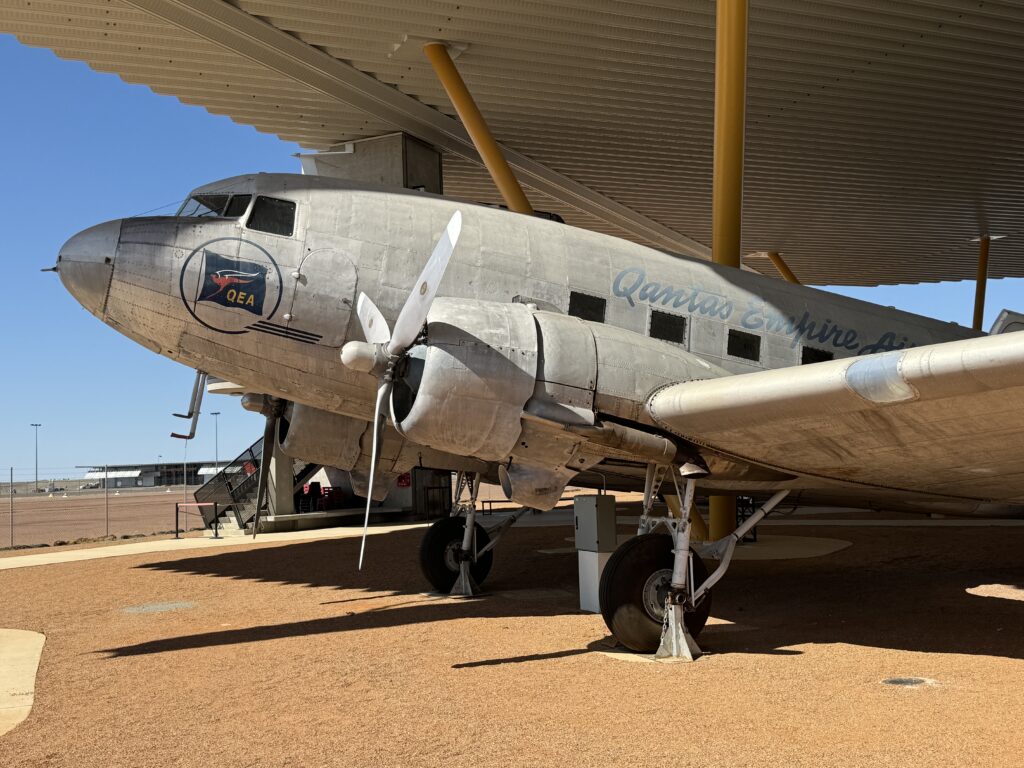
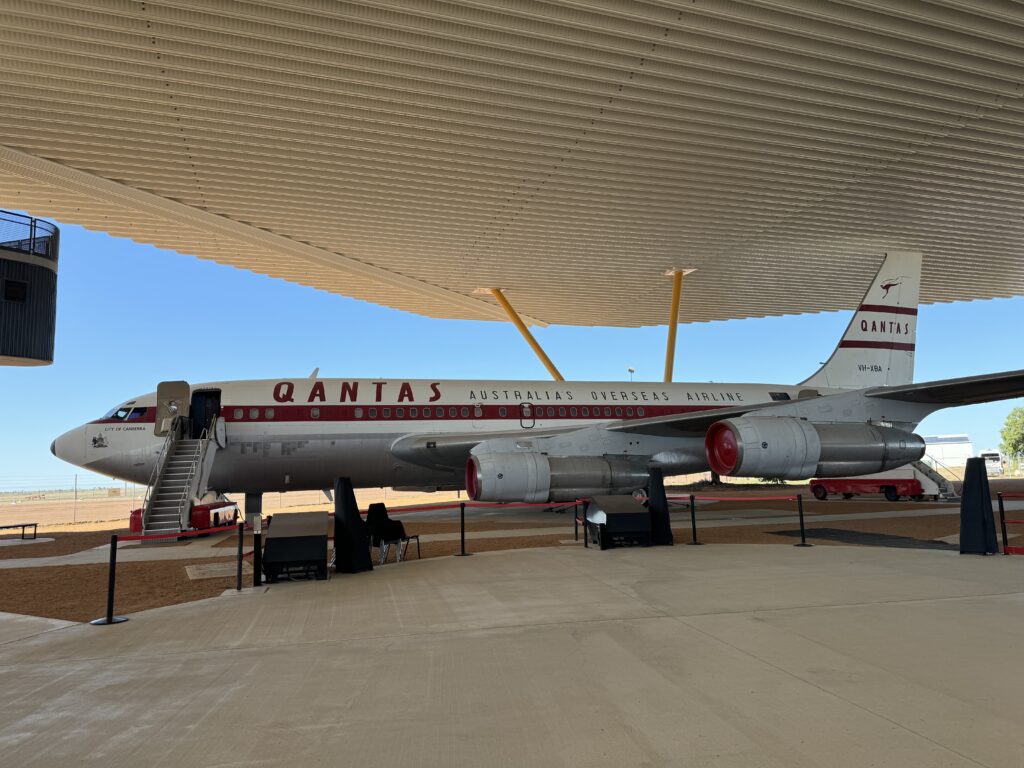

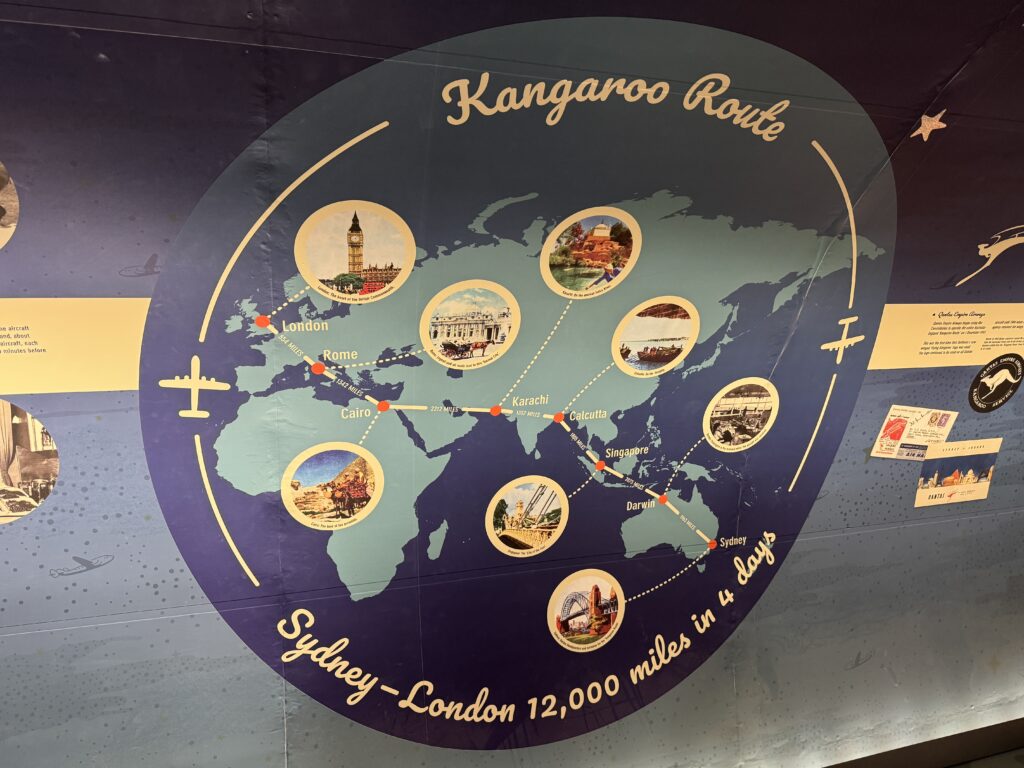
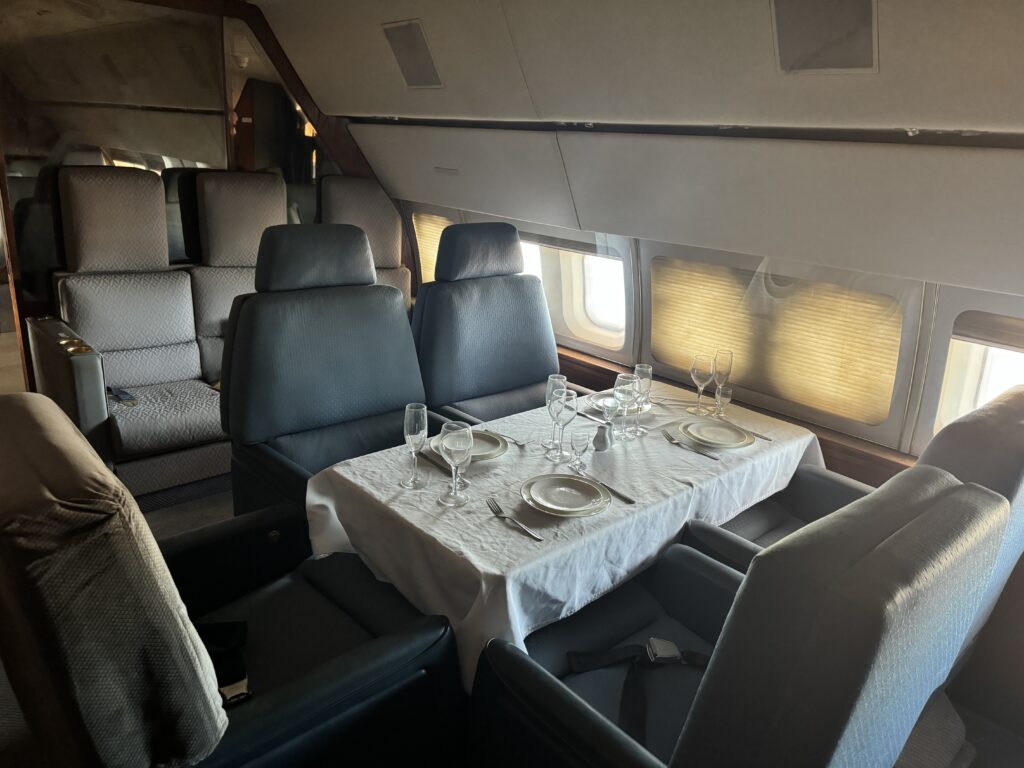


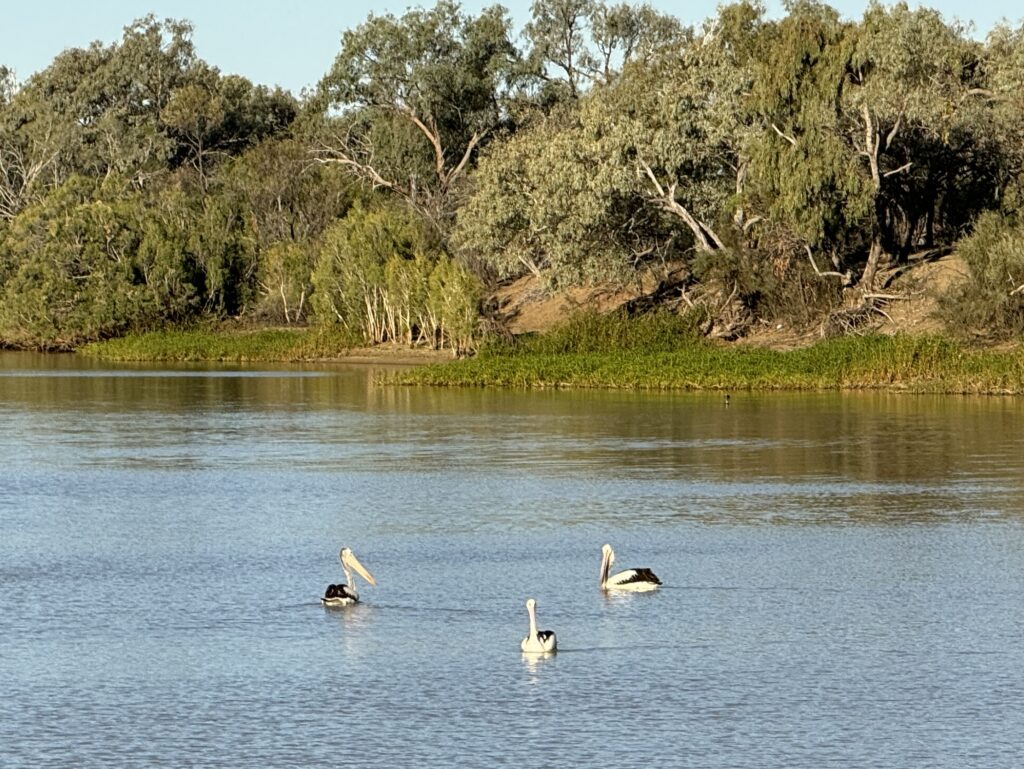
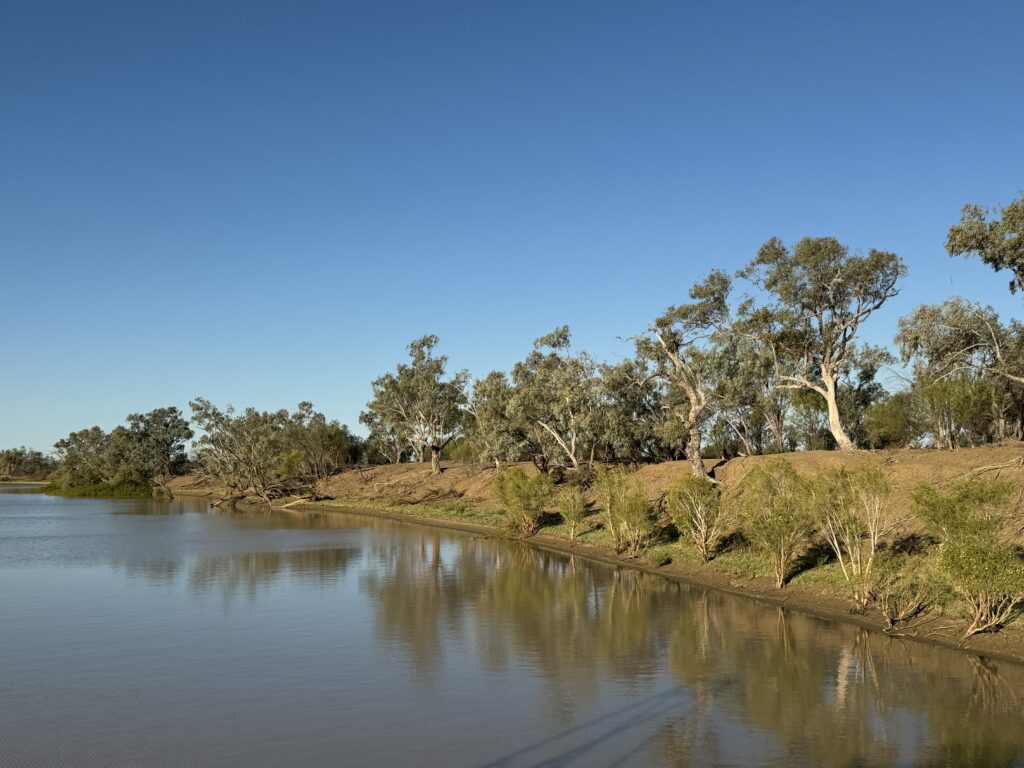
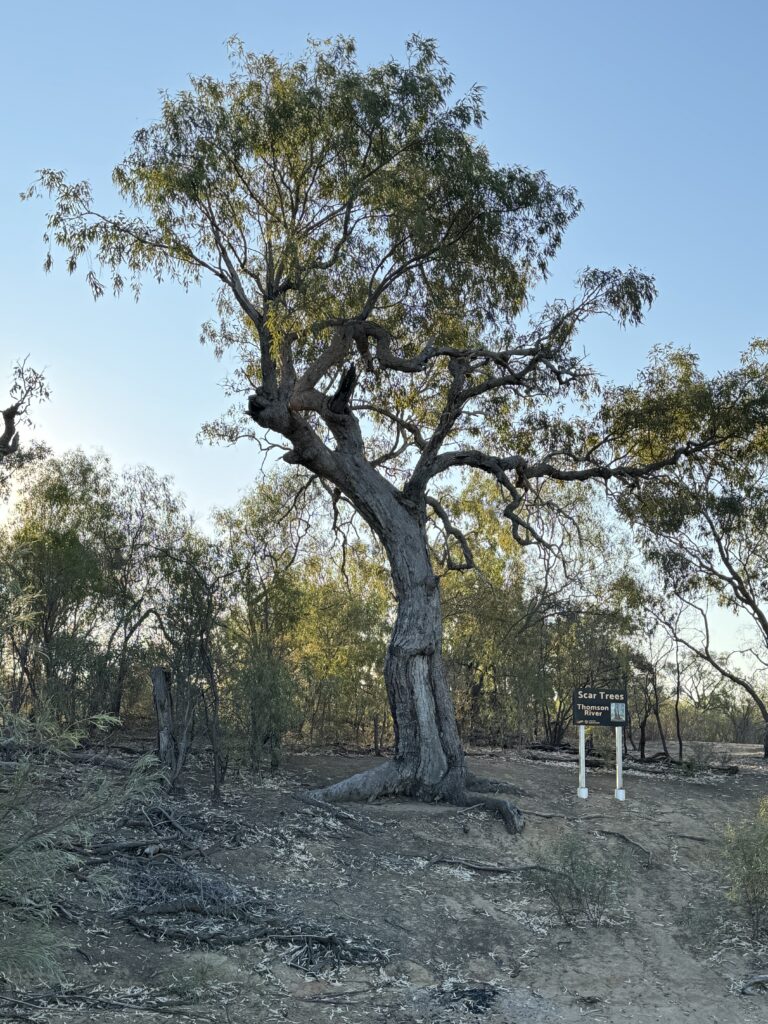
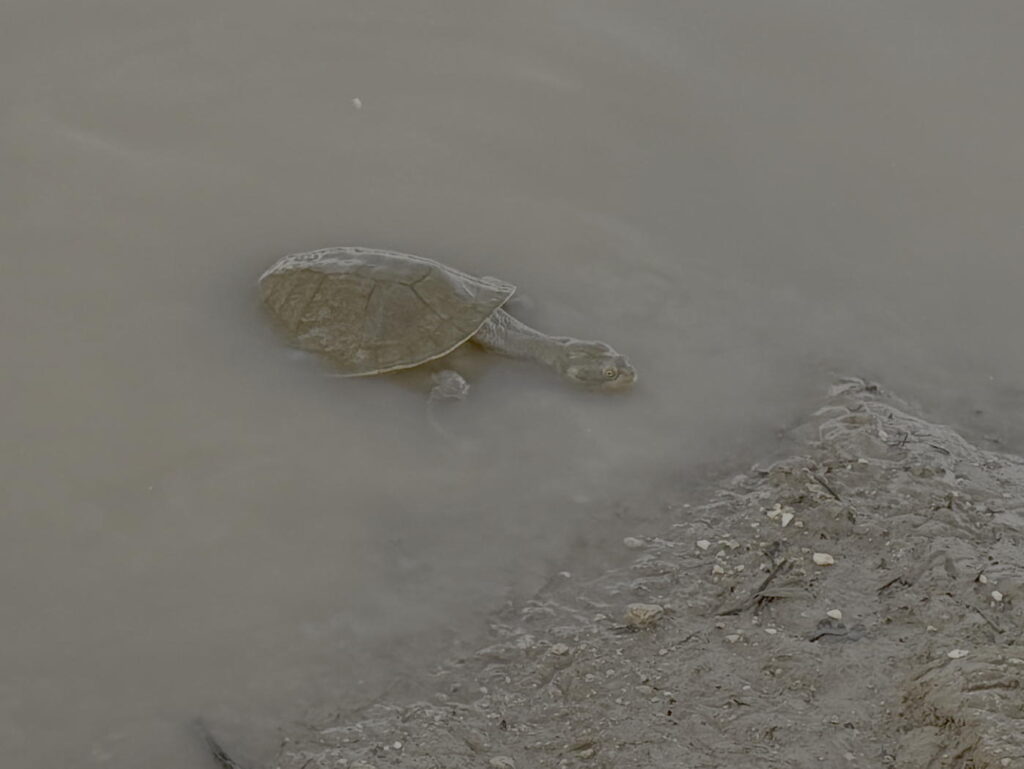
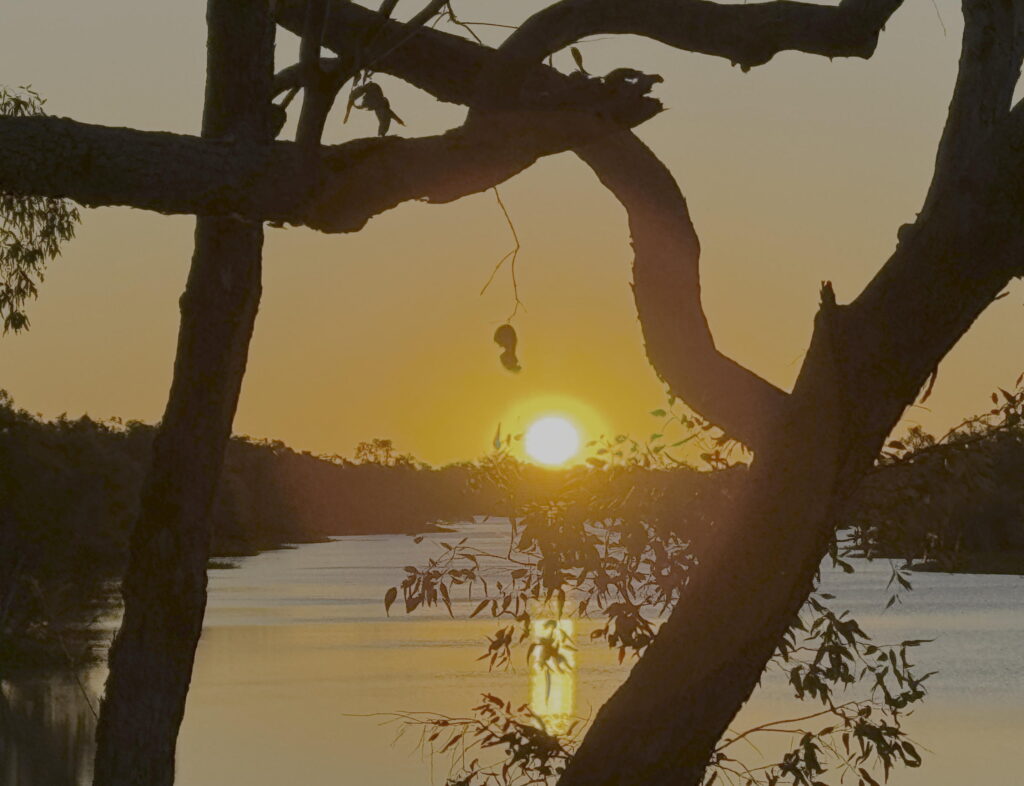
Your glamping experience sounds very comfortable, despite the wind. From your pictures it looks like what I experienced in Morocco in the desert. If the proximity audio experience of the Stockman’s Hall of Fame was like the Hyde Park Barracks museum, it must have been wonderful.
The sunset cruise with the laidback commentary and the outside dinner with music and fairy lights must have been lovely end to a lovely day.
Thanks Carolyn … those proximity guides are great aren’t they. We’ve experienced a handful and wish there were more.
I love glamping … though we’ve only done it before in Arnhemland but I like the comfort yet sense of being more open rather than in a box.
Hi Sue
Have been to many of the places you’ve been to and loved all of it.
Hope you’re both better now
Celeste
Thanks Celeste… it’s wonderful country, isn’t it – and yes, on the mend now!
Hi Sue-Terry,
I have been enjoying reading of your Outback Queensland travels. Despite having Covid, you still seem to have been able to enjoy and participate in the many varied and fascinating experiences on offer. Obviously can’t keep a good woman down! Your blogs have been very informative, and I have certainly gained knowledge from reading them.
Cheers Sue-Percy xxx
Thanks Sue-Percy, yes, we’ve managed to take part if the normal tour activities, being mindful of social distancing. It see,s to have worked! I think my tiredness has affected the blog a bit but I’ve tried to capture the essence.